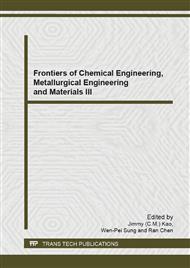p.754
p.758
p.762
p.766
p.770
p.777
p.781
p.785
p.791
Pilot-Scale Study on Electrosorption Technology for Reclaimed Treatment of Power Plant Industrial Wastewater
Abstract:
Based on the pilot test, the feasibility of Electrosorption Technology of industrial sewage treatment plant was studied. The results show that, when the equipment water flow and electrode voltage appropriate, in the sewage plant industrial average conductivity row is 3277μS/cm, 4072μS/cm, averaged desalination rate is 74.8%, averaged water production rate is about 75.5%, average consumption water of a ton is 2.46kW•H. Electrosorption technology is good removal effect of salinity, chloride and total hardness, and water production rate is high, simple operation, can be used for desalination of industrial recyclin wastewater.
Info:
Periodical:
Pages:
770-776
Citation:
Online since:
August 2014
Authors:
Price:
Сopyright:
© 2014 Trans Tech Publications Ltd. All Rights Reserved
Share:
Citation:


